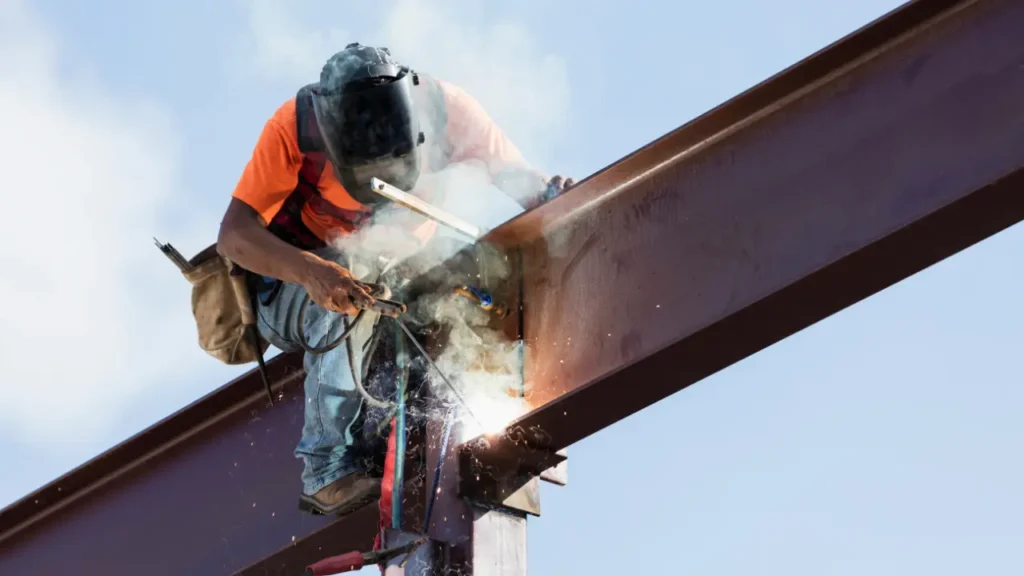Welding is a vital process across industries like construction, manufacturing, automotive, and shipbuilding. But it’s also a job that involves serious hazards—extreme heat, intense light, toxic fumes, and electric shock risks. To weld safely and professionally, you must follow strict precautions at every step.
As a welding safety expert, I’ve outlined 11 essential safety rules and tips every welder should follow to prevent injuries and stay productive on the job.
11 Welding Safety Rules & Tips for Precaution Must Know

1. Wear the Right Personal Protective Equipment (PPE)
Your safety starts with the right gear. Always wear a welding helmet with the correct lens shade, flame-resistant clothing, welding gloves, safety glasses, steel-toe boots, and ear protection. This gear protects against sparks, UV light, and burns.
2. Use a Proper Welding Helmet
Never start welding without a helmet that meets safety standards. Auto-darkening helmets automatically adjust to light intensity, protecting your eyes from arc flashes and long-term vision damage.
3. Ensure Proper Ventilation
Welding releases toxic fumes and gases like ozone, carbon monoxide, and nitrogen oxides. Work in well-ventilated areas or use local exhaust ventilation (LEV). For confined spaces, use respirators rated for welding.
4. Get Trained with Virtual Welding Simulators
For new trainees, freshers, or even experienced welders looking to refine their skills, training on AR & VR welding simulators offers a powerful, hands-on learning experience. These simulators replicate real-world welding scenarios in a virtual environment, helping learners practice techniques, correct mistakes, and build muscle memory—all without the risks or material costs of traditional training. It’s a smart, safe way to master welding before stepping into real-world applications.
4. Inspect Equipment Before Use
Before you begin, check all cables, hoses, clamps, and the welding machine for wear, fraying, or damage. Faulty equipment can lead to electric shock, gas leaks, or fire.
5. Keep Your Workspace Clean and Dry
Moisture and clutter are both dangerous. Water increases shock risks, while debris can catch fire from sparks. Keep your area clean, organized, and dry to avoid slips and accidents.
6. Use Fire Prevention Measures
Always have fire extinguishers and fire blankets nearby. Remove flammable materials, and use welding screens or curtains to contain sparks. A moment of prevention can avoid a disaster.
7. Be Aware of Your Surroundings
Use welding screens or barriers to protect others nearby. Mark welding zones clearly, and ensure only authorized, properly equipped individuals are allowed near active welding areas.
8. Handle Gas Cylinders Safely
Gas cylinders should be stored upright, secured properly, and kept away from heat or direct sunlight. Check for leaks before use, and always use the correct regulator for the gas type.
9. Disconnect Power When Not in Use
Turn off your welding machine when changing tools, performing maintenance, or when the job is done. This prevents unintentional arc strikes and saves power.
10. Stay Trained and Updated
Welding safety standards and technology evolve over time. Attend refresher training sessions, stay informed about industry regulations, and consider using modern training methods like simulators for better retention.
11. Be Prepared for Emergencies
Know where your emergency exits, fire extinguishers, and first aid kits are located. Make sure you and your team are trained in basic first aid and emergency response procedures.
Final Thoughts from a Welding Safety Expert
Welding can be dangerous, but with the right habits, tools, and training, it doesn’t have to be. These rules may seem simple, but following them can be the difference between a productive day at work and a serious accident.
Looking to enhance your team’s welding safety training? Consider implementing welding simulation systems that allow for risk-free, hands-on learning in a controlled environment.


